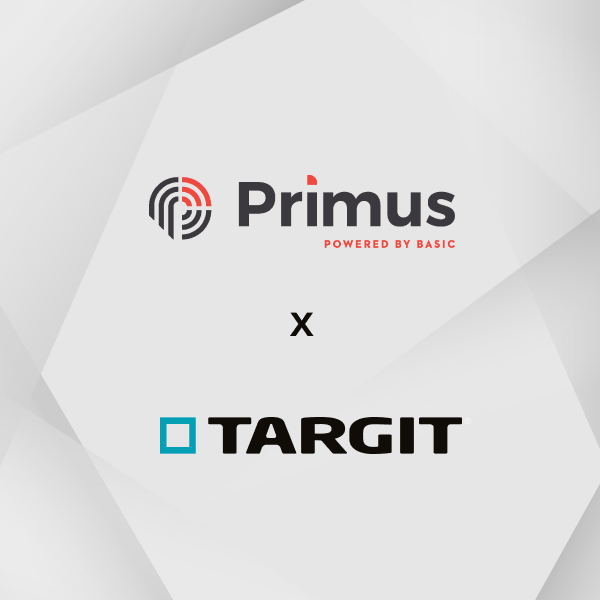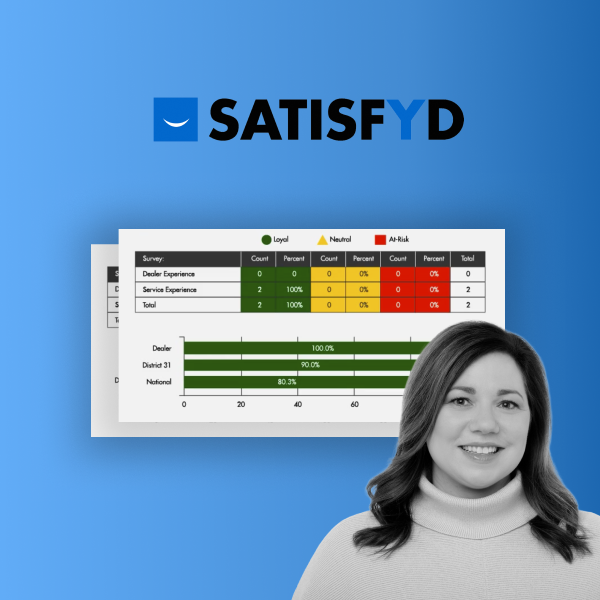Business Intelligence (BI) is a critical tool that enables many types of organizations to make informed decisions, streamline operations, and accelerate growth. BI gives employees the ability to monitor trends over time and better understand how various parts of the business relate to one another, all by generating actionable insights in reports and dashboards.
BI for heavy equipment dealerships helps increase efficiency and empower managers, technicians, sales reps, and other team members to make autonomous informed decisions in every department.
It’s important to remember that your dealership’s BI journey isn’t a one-time software implementation; it’s an ongoing process through which your employees will learn to use the tools and features at their disposal and integrate data insights into their daily work.
Your dealership’s BI maturity will increase as you continue to use, and expand upon, your BI capabilities. As your end-users gain experience in leveraging BI, you'll notice specific indicators that show your BI efforts are maturing.
In this blog, we’ll outline ten signs that demonstrate your dealership is moving toward a higher level of BI sophistication.
1. Decisions Are Based on Timely, Accurate Data: When you first implement a dedicated BI solution, there’s typically an introductory period during which employees must get used to reviewing and using data in their day-to-day work. There may have been a period where data, such as information from automated reports or dashboards, was only an occasional consideration.
As your dealership’s approach to BI matures, data-based decision-making will become embedded in your organization's culture. Stakeholders at all levels will recognize the value of data insights and actively seek them out to guide strategies. At the same time, operational employees will instinctively turn to your BI solution for insights before making critical decisions.
2. Employees Collaborate Across Departments: No organization wants to work in silos, and poor cross-functional communication can be detrimental to your dealership. Customer service reps might promise equipment repairs more quickly than the service team can accommodate due to their workload, sales and marketing teams may be focused on different campaigns or audiences, and much more.
A mature BI implementation fosters collaboration within and between multiple departments. Data becomes a common language that brings together teams like Sales, Parts, and Service. The sharing of data insights and visualizations becomes routine and enhances collective decision-making, ensuring everyone is marching toward the same set of strategic goals.
3. Your Dealership is Exploring or Leveraging Predictive Analytics: Business intelligence and analytics tools are essential for generating reports and tracking daily, weekly, and monthly performance. However, a maturing BI strategy should include more than basic, retroactive analyses.
As your BI maturity increases, your dealership should start exploring the potential for predictive analytics, which use historical data to predict future trends and forecast for the months ahead. These types of insights will allow business leaders to make proactive decisions that put your dealership ahead of the market and improve processes in various departments.
4. Employees Take Advantage of Self-Service BI Tools: The effectiveness of your business intelligence solution greatly depends on how your employees use it in their day-to-day. When your dealership first implemented a BI and reporting solution, you likely had to train employees on how to use the tool, while also encouraging them to integrate reports, dashboards, and data, in general, into their work.
As your business matures, more employees become comfortable using self-service BI tools, like drag-and-drop dashboards, drilldown functions, and portals that always display the latest numbers for their team or department. This empowers non-technical users to access and analyze data on their own, reducing dependency on analysts to fulfill one-off report requests or send out bulk email updates.
5. Your BI Solution is Integrated with Other Systems: One of BI’s greatest benefits is its ability to combine data from multiple enterprise software tools, such as your dealership’s DMS, ERP, and CRM
Mature BI systems are purpose-built to integrate with and extract information from these data sources, combining it in a consistent format that allows for accurate, comprehensive analysis. This integration enhances data accuracy and supplies a more complete view of business operations.
6. Your Dealership Pulls Insights From High-Quality Data: When you first started using a business intelligence solution, your dealership likely focused on identifying critical key performance indicators (KPIs) and learning where to find the data needed to measure against them.
With maturity, your business will start to place increased emphasis on data quality, rather than just the existence or availability of data in general. Data cleansing, validation, and governance become standard practices to ensure accurate and reliable insights.
7. You Prioritize Data Security and Compliance: In the world of BI, it’s essential to strike the right balance between making data accessible and keeping it secure. Dealers and other businesses alike must ensure their BI solution, and their business practices, are designed to connect end-users with relevant data without compromising data integrity by sharing the wrong information to the wrong audience.
As your BI maturity increases, expect to see a prominent focus on data security and compliance. Your solution and the team supporting it should ensure proper access controls and user roles, end-to-end data encryption, and compliance with all industry regulations, as these are integral parts of a sustainable BI strategy.
8. Your Reporting Metrics Align with Strategic Goals: The reports and dashboards generated within your BI solution likely correlate with a set of KPIs your dealership defined during implementation. However, it’s important to consider how each of these metrics relates to larger department- and business-level goals.
In a mature BI setup, the metrics your dealership tracks will directly align with your strategic goals. Then, individual KPIs and success metrics are monitored routinely to measure progress and promote alignment between teams and departments.
9. Employees Continue to Learn and Upskill in BI: Your dealership’s BI journey will be a continuous one, from the metrics you track to how your employees use data in their daily decisions. And a high level of BI maturity involves ongoing learning and skill development to support that evolution.
So along with taking advantage of the self-service tools at their disposal, it’s important that your end-users keep exploring new ways to use BI and level-up their skills inside your solution. Your team should actively seek out training opportunities that will help them maximize the potential of your BI tools, while keeping up with the latest trends and techniques.
10. Executives Support BI-Related Initiatives: The most effective BI strategies are those championed at all levels of an organization, from operational employees to leadership teams. As data becomes more central to your dealership operations, executives and stakeholders will begin offering more support and involvement in BI projects.
Your dealership will see the effects of this executive buy-in through budget allocations and resource planning, as well as how top-level employees use data-based insights to make strategic business decisions.
Advance Your BI Maturity With TARGIT
In conclusion, the maturation of your dealership's use of BI goes beyond the tools and technology. It's a journey that transforms how your organization thinks, operates, and grows. Recognizing these signs can help you gauge your progress and inspire new ways to use data insights in your daily decisions and dealership operations.
At TARGIT, we’re committed to supporting customers at every stage of their BI journey, from initial implementation through the ongoing use of their solution.
We provide heavy equipment industry prospects and customers with various resources to guide them at all levels of BI maturity, including:
- Pre-built BI solutions for the heavy equipment industry
- Consulting services from experts with 90+ years' experience
- An interactive Community forum for dealers
- Training and eLearning opportunities
Watch our on-demand webinar to see the newest course in our eLearning library, designed exclusively for heavy equipment dealers. We’ll also show you around the portal and share the latest updates from our Heavy Equipment Community subforum.








